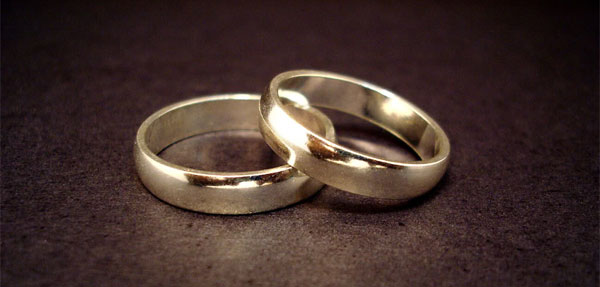 As studies have been showing, interracial and inter-ethnic marriages have been generally on the rise over the past few decades — and now they account for one in seven new U.S. marriages, according to the Pew Research Center. The data for Asian Americans is deceptive in some cases, but fairly well-known in others.
As studies have been showing, interracial and inter-ethnic marriages have been generally on the rise over the past few decades — and now they account for one in seven new U.S. marriages, according to the Pew Research Center. The data for Asian Americans is deceptive in some cases, but fairly well-known in others.
Within these most recent findings, Asian Americans are the racial group most likely to intermarry based on percentages (clocking in at 30.8%), while whites are the least likely to do so (8.9%). Further, Asian American women are far more likely than men to intermarry, while African Americans face a mirrored trend. Finally, of the minority groups (Black, Hispanic, and Asian), of almost 3,000 sampled people, more people would be accepting of a family member marrying an Asian as opposed to a member of one of the other minority groups.
At first glance, this data suggests that Asian Americans are intermarrying more and becoming more assimilated. However, there are several problems with this unaltered data.
One problem is simply sample size. While Asian Americans are more likely to intermarry, there are also fewer of them to begin with. In the 2000 Census, only 4.2 percent of the population identified as Asian American. This doesn’t include mixed race individuals, but even then only 13.9% of people identify as Asian American in combination with another race. This is just statistics: if one Asian American marries someone outside of his or her race, and one Caucasian American marries outside his or her race, the Asian American will have a greater effect on the total percentage for his race.
Another problem is from including inter-ethnic Asian American marriage within this data. Asian Nation reported that there is variation among the pan-Asian marriage rates. Japanese and Korean Americans are the most likely to marry across Asian ethnic lines, while Asian Indians are least likely. Filipino, Japanese, and Korean Americans are also the most likely to marry other races. However, this statistic is conditional upon an Asian American marrying across racial lines in the first place. According again to Asian Nation, a study by Shinagawa and Pang found that:
With the exception of U.S.-raised Korean women, all other Asian ethnic groups and husbands and wives are also more likely to marry another Asian (either within their own ethnic group or some other Asian ethnic group) than to marry a White person.
Saying that Asian Americans are the most likely to intermarry is a version of racial lumping. A trend that is true of the race at large may not be true of the individual ethnic groups. This problem may not have as large an effect on public opinion as, say, the commonly quoted statistic that Asian Americans earn higher salaries than other minority groups, but it still provides an opportunity to misunderstand the data.
Finally, the Pew Research Center noted that while Asian Americans are the most likely as a group to intermarry, this trend has not changed over the past two decades. In fact,
Rates of intermarriages among newlyweds in the U.S. more than doubled between 1980 (6.7%) and 2008 (14.6%). However, different groups experienced different trends. Rates more than doubled among whites and nearly tripled among blacks. But for both Hispanics and Asians, rates were nearly identical in 2008 and 1980.
So, while intermarriage is on the rise, it hasn’t necessarily changed for all the groups involved. What does this mean? As a multiracial individual, I would love to be able to report that Our Great Country is moving towards a multiracial face and that the racial lines would soon be disintegrated. In some sense, this may still be true. While trends for Asian Americans have not improved over the past two decades, at the same time percentages have not decreased. Even with the availability of in-race marriage partners, some people have chosen to marry outside of the Asian American group.
There are still color barriers, and at present they show no real sign of going away. Even if individuals would be more accepting of an Asian family member than a Black one, they would be most accepting of a White family member. There is still a hierarchy within society, and until something drastic happens this does not seem likely to change quickly.







